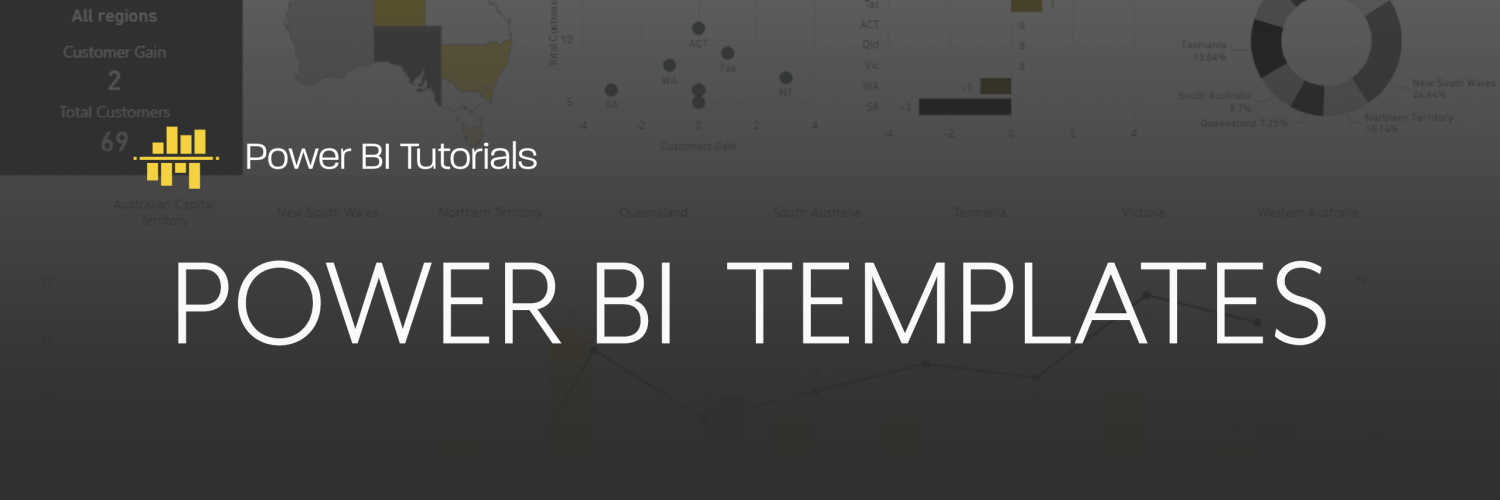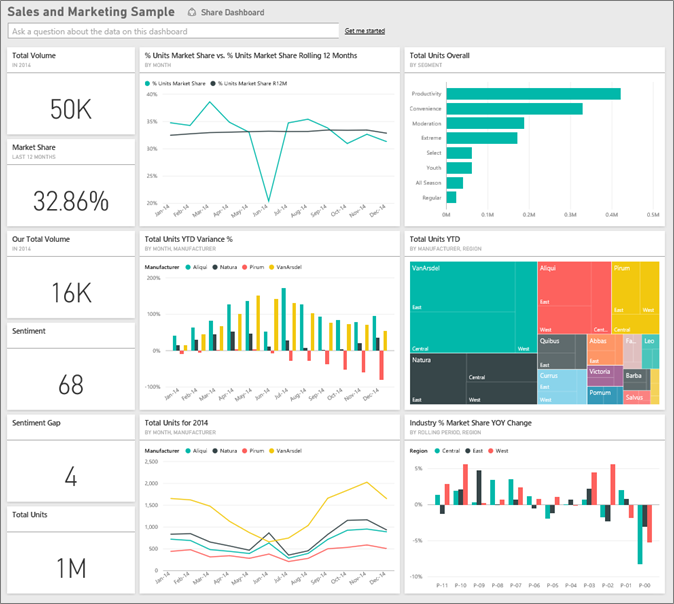
Ensure that these are clearly stated, placed somewhere visible even on the Power App or within the dashboard while testing to keep these critical pieces of information at the forefront while combining the end-user experience from two separate tools to one unified solution. Suppose the tool doesn’t have a defined audience and purpose. It’s like having a destination but no map, a vehicle, and an idea but no vision to truly connect the dots.
#POWER BI GALLERY SALES DASHBOARD HOW TO#
Here is a quick tip before you start to plan how to build your Power Apps, Power BI and Power Automate integration. There is also the possibility to set off Power Automate actions based on data-driven alerts.Ĭreate a Unified Power Apps, Power BI Experience An example of a Power App embedded in a Power BI Report

We can also view our Power BI data in our Power Apps. Thus, allowing business users to access the information when using the apps. It is not limited to just surfacing Power Apps in the Power BI report. You can even call Power Automate to keep track of Power Query errors. Power Apps provides a great shell to control and kick off these actions. There are huge amounts of actions that can be taken in Power Automate. Alternatively, we could kick off a campaign by reacting to information in a marketing dashboard. Maybe in a sales dashboard, we want to alert someone about a trend. Take Action on dataĪs well as adding and storing information, several actions can be taken through Power apps, Power BI and Power Automate integration. Or we could send an email regarding some information you have filtered in the reports. This may include adding comments to another database. A solution like this would let others see the comments when they view the reports. Like editing the data directly, the solutions also allow for additional data to be stored. With the embedded solutions, they can update and write back to the source system from within the Power BI Report. For example, they know a customer has gone out of business. They may want to make some small adjustments. A good example is sales staff looking at forecasts. Power Apps and Power Automate provide a great way to be able to modify this data directly. Power BI is natively a read-only tool, allowing users to see their data.

One of the biggest advantages of using Power apps, Power BI and Power Automate together is the ability write back data to the source system. Here are a few common use cases that can have huge benefits. There are countless opportunities to unify these tools and use them together. Use Cases for Power Apps, Power BI and Power Automate Integration Creating an end-user-centric dashboard and power app creates a simplified user experience. We will understand who will be visiting the reporting solution, the value they will receive from it, and take action through the actions below. Depending on your data size this may take a minute or two.Using Power Apps Power BI and Power Automate together can unleash huge benefits and enhance your solutions.

Click on Connect your data link on the yellow background on the top of the page.
#POWER BI GALLERY SALES DASHBOARD INSTALL#
Install Power BI Web App: Salesforce Overview Report

The template has 3 report pages, Report, Overview, and Funnel, and can be customized with different fields, which you can find in available Salesforce data on an object level. This reports pulls the following objects and fields: Please make sure that you have the necessary user rights to install an external app. You’ll have access to all Salesforce data and the whole process should not take you more than 5 minutes.Īs a prerequisite to getting started you’ll need access to Salesforce. Use this Power BI Salesforce Overview Report template to visualize your Salesforce Contacts in Power BI in a few clicks.


 0 kommentar(er)
0 kommentar(er)
